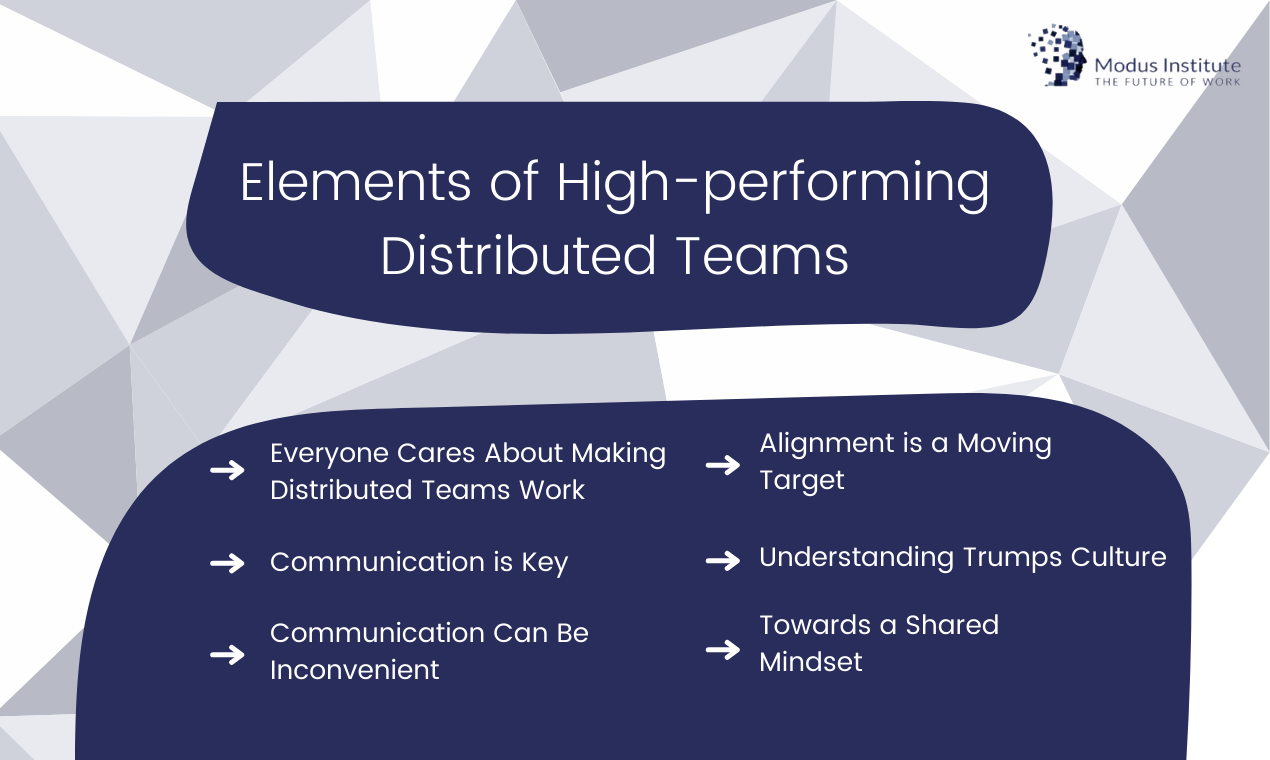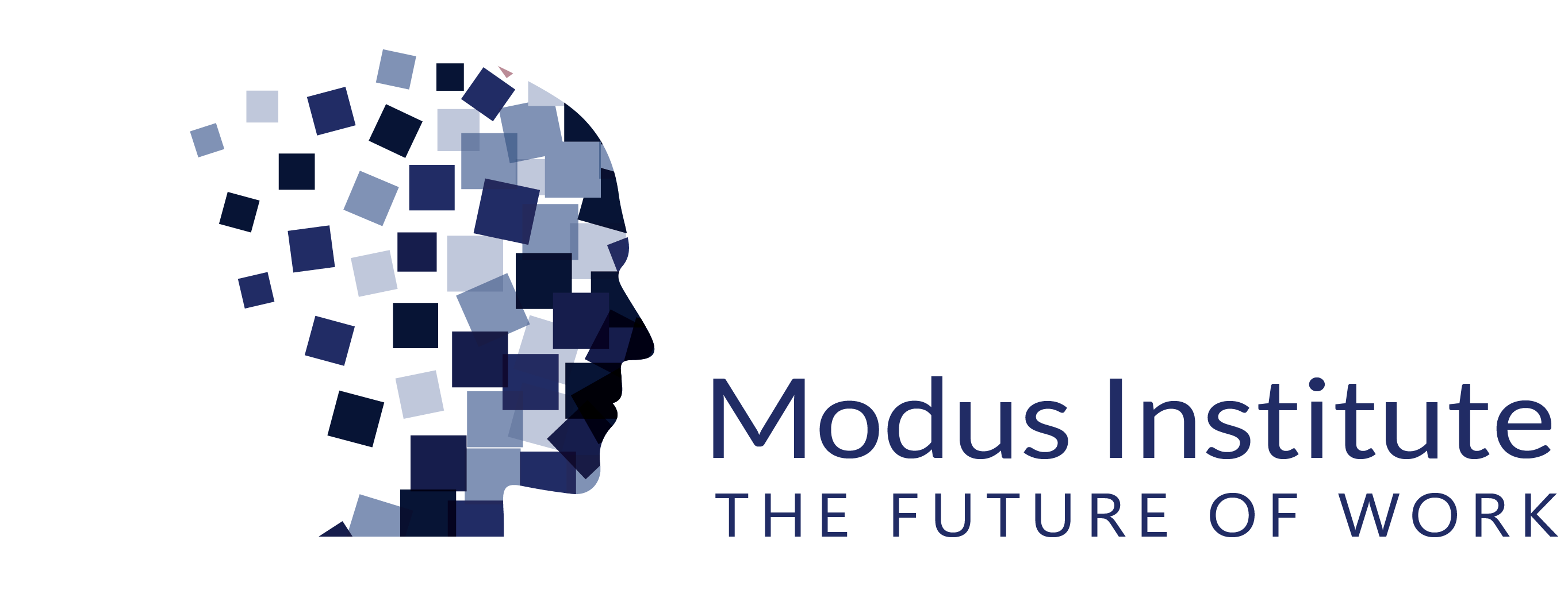How to Build High-Performing Distributed Teams
Nov 1
/
Jim Benson
A successful distributed team seems like a wonderful, yet unobtainable dream. But stop and think, how often are your non-distributed teams successful? When have they been successful and why?
It’s never because of your work plan was perfect or because you hired the best people. It’s not because you got expensive new project management software. It’s not even because you had executive buy-in and freedom to make your own decisions.
Successful teams only result from one key ingredient: clarity.
It’s never because of your work plan was perfect or because you hired the best people. It’s not because you got expensive new project management software. It’s not even because you had executive buy-in and freedom to make your own decisions.
Successful teams only result from one key ingredient: clarity.
People need to know what work is being done by whom, what their own roles are, when to ask for help or provide information, what decisions they can safely make on their own, what is being completed (Imagine! Seeing progress makes you successful!), and knowing the people they are working with.

Common Mistakes to Avoid When Building Distributed Teams
For a distributed team, it can be difficult to achieve and maintain clarity because team members’ exposure to each other is often limited (if non-existent). They not only begin to feel isolated, but they spend a lot of their energy either acting in good faith in a way that doesn’t help the team, or wondering how they should be acting. You know trust is eroding when meetings focus on what is going wrong rather than what work is happening or what the team is learning. A lack of clarity around what work is being done, what is being finished well, what is lagging, and who needs help leads directly to a loss of alignment. Team members then struggle to figure out what is really going on and speculate as to why breakdowns are occurring.
It’s not long before your distributed team becomes distributed silos of one.
Each person, at home, divided.
Distributed systems are prone to have weaker links between their components (the team members). Systems thinking pioneer Russell Ackoff defined a system as “the interactions between the components.” If we have weak links, we have a weak system. This weak system will struggle for definitions of work, quality, and psychological safety.
The good news is we can build systems to keep people informed and achieve the clarity we speak.
It’s not long before your distributed team becomes distributed silos of one.
Each person, at home, divided.
Distributed systems are prone to have weaker links between their components (the team members). Systems thinking pioneer Russell Ackoff defined a system as “the interactions between the components.” If we have weak links, we have a weak system. This weak system will struggle for definitions of work, quality, and psychological safety.
The good news is we can build systems to keep people informed and achieve the clarity we speak.
Thank you!
To build strong distributed teams, all team members must be aware of:
When you add these elements together, both team members and the project benefit from greatly increased clarity. People know what is being done for whom, and why. They know what’s being completed so they can interpret breakdowns in the context of overall success. Best of all, accountability, which people spend way too much time worrying about, will be evident in completed work by the team as a whole (no longer any need to come up with productivity metrics or other morale-destroying systems).
- Roles - What things that need to be done are being done and by whom (not job descriptions, but actual roles). These can be shared or individual.
- Boundaries - When does action by me require talking to you?
- The Product - Goals, status, and customer.
- What is in Flight - We can’t collaborate if we are working in distributed silos. Team members must know in real time who is working on what, when they are stuck, and when they have successfully completed their tasks.
- Collaboration Opportunities - As often as possible, team members need to work together to complete tasks. This builds rapport (very important) and strengthens communications between distributed team members.
When you add these elements together, both team members and the project benefit from greatly increased clarity. People know what is being done for whom, and why. They know what’s being completed so they can interpret breakdowns in the context of overall success. Best of all, accountability, which people spend way too much time worrying about, will be evident in completed work by the team as a whole (no longer any need to come up with productivity metrics or other morale-destroying systems).
Six Elements of Functional Distributed Teams
A few years ago, Tonianne and I were in the world’s epicenter of offshoring, Bangalore, India. We spent several days running a Kaizen Camp and keynoting a sold-out Lean India Summit.
We worked a lot with distributed teams and not surprisingly, Kaizen Camp surfaced a lot of issues around offshoring or the perils of distributed teams. (This is a slice of the conversations which were varied and deep.) At Kaizen Camp, we sought to provide people with epiphanies - game-changing realizations that will have a direct impact on their work and life.
We worked a lot with distributed teams and not surprisingly, Kaizen Camp surfaced a lot of issues around offshoring or the perils of distributed teams. (This is a slice of the conversations which were varied and deep.) At Kaizen Camp, we sought to provide people with epiphanies - game-changing realizations that will have a direct impact on their work and life.

The six elements of high-performing distributed teams are a direct result from topics and learnings from that Kaizen Camp. Hundreds of people gathered who worked every day on distributed teams. They had experienced the best and the worst of how to treat remote workers.
This list mirrors what our clients are saying and what we’ve heard over the last few years of increased team distribution:
Everyone Cares About Making Distributed Teams Work
There are challenges around distributed teams, everyone recognizes that - whether it’s a project manager in Boston or a tester in Chennai. But also to a person, everyone wants to fix it. Yes, some people want to consolidate their teams but most people recognize that talent lies in people and people have homes. Sometimes that home isn’t where you are. The need for project success is important to everyone.
Communication is Key
Information flowing from person to person or group to group is usually sufficient, but not always. The problem here is that “usually” (maybe 70% of the time) is not good enough. Small communication breakdowns create cascading problems for work. Deadlines slide, defects mount, and misdirected designs build upon each other. The ability to communicate current work (who is working, how they are working, what is being done, what is in peril, what discoveries have been made, what requirements are more complex than we expected) is a linchpin for distributed team success.
Communication Can Be Inconvenient
We want to communicate, but we are not always the best at it. Time zones and busy schedules can frustrate this. Deadlines abhor communication. Therefore, quite often, distributed teams will try to solve problems in isolation or simply ignore concerns and soldier on in service of the deadline.
Creating convenient and expected lines of communication that account for time zones and don’t carry political weight (why are you slowing us down with this meeting?!) are crucial for successful distributed teams.
Alignment is a Moving Target
Alignment is a mutual understanding of purpose, direction, and expected action. Since our understanding of our projects advances and evolves as the project continues and we are constantly making decisions, alignment should advance and evolve with it.
In distributed teams, small and large decisions are made in various offices or by various individuals every day. When they are not communicated, alignment breaks down (quickly). Successful teams require alignment resets much more often than is common.
Understanding Trumps Culture
We are quick to blame cultural differences on breakdowns in workflow or alignment because culture is an easy scapegoat. Most problems we’ve seen, however, are between well-intentioned capable humans on both sides of the pond.
The problems are rarely actually cultural, they are usually misunderstandings of work (intent, scope, or complexity) or the result of drift in alignment. Building systems that help keep these on track is a common hallmark of a successful distributed team.
Towards a Shared Mindset
Whether it’s the Lean mindset or something else, there was a strong drive to understand why we are working together and how we are going to accomplish our mutual goals. Clarity of thought, of process, and of the culture of the distributed team as a whole (team culture), was foremost in people’s minds at Kaizen Camp. Building a common culture of mutual respect, understanding of the work, and a drive to complete a quality product was present in almost every discussion.
Where to Start
Distributed teams’ challenges largely come from the thin mechanisms of communication we create. Communication doesn’t have to be video calls, but it needs to be personal, useful, and understandable.
All teams, distributed or co-located, will benefit from this clarity and collaboration. We’ve all seen it. Any team you’ve been on that’s been successful has likely known what their mission was, what their role was, and had the information and authority to act.
These elements are explored in depth in Modus Institute’s Successful Distributed Teams class part of Modus Institute's Platinum Subscription.

We are an online educational platform that helps professionals and aspiring individuals to succeed in their goals.
Copyright © 2025